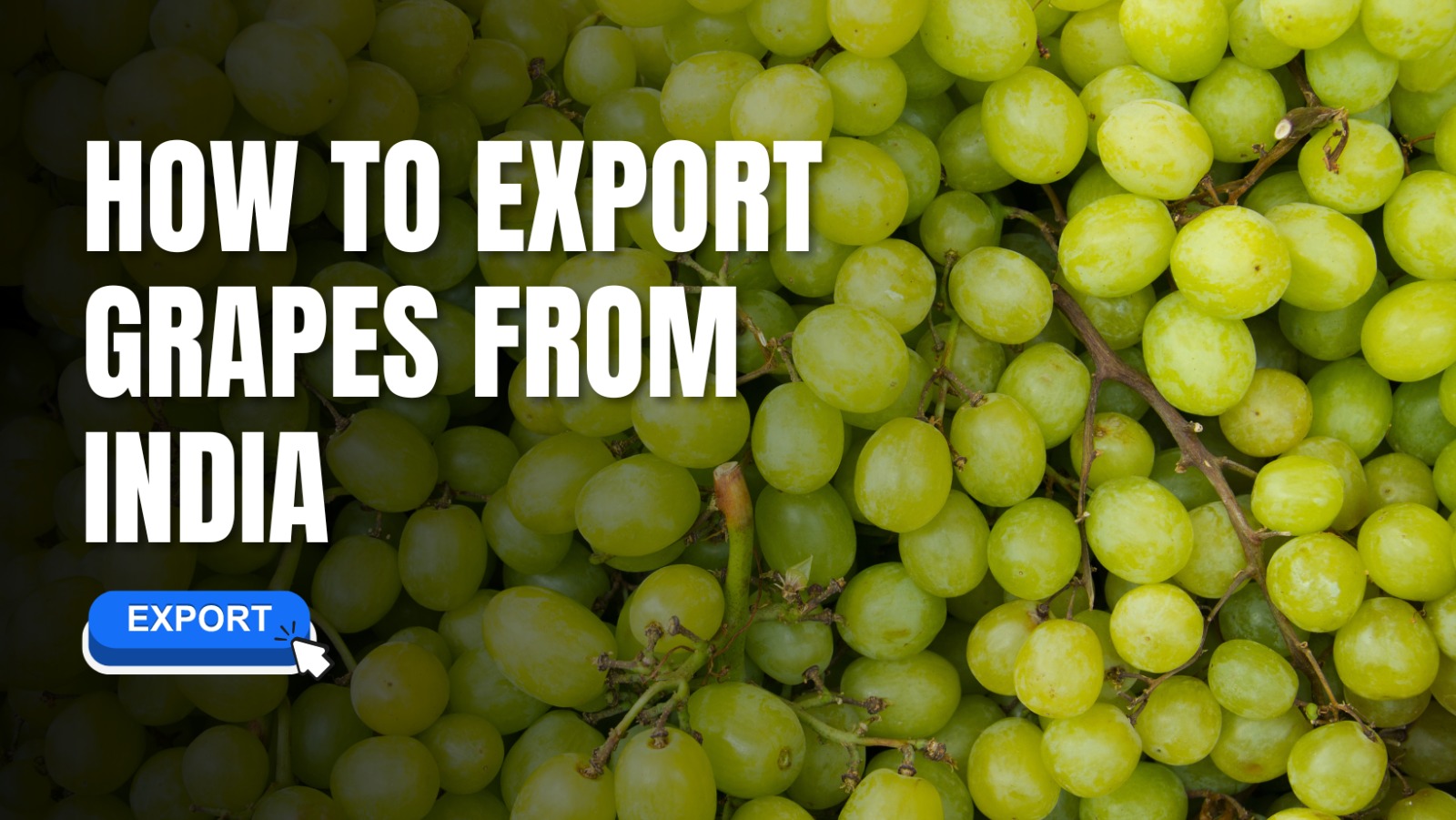
Given the country’s favorable climate and robust agricultural sector, exporting grapes from India is a lucrative venture. India is one of the leading exporters of this fruit globally, with a significant portion of its produce reaching international markets. This blog will walk you through the process of exporting grapes from India, covering the necessary regulations, export duties, and recent export data.
Can Grapes Be Exported from India?
Yes, grapes can be exported from India. The country’s diverse climate and advanced farming techniques allow for the production of high-quality produce that meets international standards. The major grape-producing states in India are Maharashtra, Karnataka, Tamil Nadu, and Andhra Pradesh. Indian grapes are known for their taste, quality, and variety, making them a sought-after commodity in global markets.
Key Regions for Procuring Grapes in India
Maharashtra: This state is the largest producer in India, particularly known for its Thompson Seedless variety. The Nashik region, often referred to as the “Grape Capital of India,” is renowned for its high-quality produce.
Karnataka: The Bangalore Blue and Anab-e-Shahi varieties are predominantly grown here. The state’s favorable climate and soil conditions contribute to the superior quality of its produce.
Tamil Nadu: The state is famous for its Muscat Hamburg and Anab-e-Shahi varieties. Regions like Coimbatore and Madurai are major hubs for grape cultivation.
Andhra Pradesh: Known for the Bangalore Blue variety, Andhra Pradesh has emerged as a significant player in the grape industry, with extensive vineyards in districts like Chittoor and Anantapur.
Regulations for Exporting Grapes
Exporting this fruit from India involves complying with several regulations to ensure quality and safety. Here are the key steps and regulations to be aware of:
APEDA Registration: The Agricultural and Processed Food Products Export Development Authority (APEDA) is the primary body overseeing the export of agricultural products, including grapes. Exporters must register with APEDA to obtain an RCMC (Registration-cum-Membership Certificate).
Quality Standards: The produce must meet the quality standards set by APEDA, which includes guidelines on size, color, sweetness, and absence of residues. The grapes are inspected and certified for export.
Phytosanitary Certificate: This certificate is issued by the Plant Quarantine Authority of India and ensures that the produce is free from pests and diseases. It is a mandatory requirement for exporting grapes.
Packaging and Labeling: Proper packaging is crucial to maintain the quality during transit. Grapes must be packed in ventilated cartons with appropriate labeling, including details of the exporter, importer, and product information.
Customs Clearance: Exporters must submit the necessary documents, including the invoice, packing list, bill of lading, and certificates of origin and quality, to the customs authorities for clearance.

Export Duty on Grapes
As of the latest updates, India does not impose any export duty on grapes. This makes the export process more attractive and cost-effective for exporters. However, it is essential to stay updated with the latest trade policies and regulations, as these can change.
Export Data from 2023 to 2024
The export of this fruit from India has shown impressive growth. According to APEDA, India exported approximately 240,000 metric tons in the fiscal year 2023-2024, generating a revenue of around USD 350 million. The primary markets for Indian grapes include the European Union, the Middle East, and Southeast Asia.
Revenue and Economic Impact
The grape export industry significantly contributes to India’s agricultural revenue. The increasing demand for Indian produce in international markets has led to better prices for farmers and a boost to the rural economy. Moreover, the advancements in cold chain logistics and transportation have enhanced the shelf life and quality of Indian grapes, further strengthening their global presence.
Conclusion
Exporting grapes from India is a promising venture with a well-defined process and regulations ensuring quality and safety. By adhering to the necessary standards and leveraging the growing global demand, Indian exporters can capitalize on the immense potential of the grape export market. With no export duties and a strong production base, India continues to be a leading player in the global grape industry. Stay informed about the latest regulations and market trends to make the most of this opportunity.
This blog just scratched the surface of the exciting world of exports! check out this helpful link: lean How to start your export business
Do Follow us on Our Social Media channels to stay ahead in your rice business
